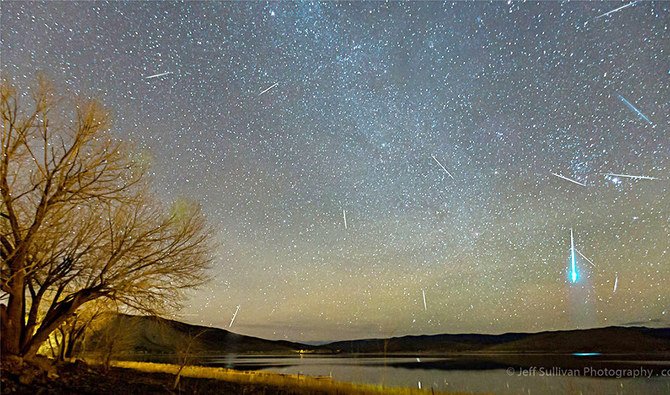- The Geminid meteor shower is expected to peak on Dec. 13-14
Rawan Radwan
JEDDAH: Avid skywatchers in the Kingdom are preparing to head out into the deserts to catch one of the most spectacular celestial shows of the year — a meteor shower.
The Geminid meteor shower is expected to peak on Dec. 13-14, raining down up to 120 meteors per hour in one of the brightest displays of the 100-plus meteor showers viewed from Earth each year.
In a bonus for stargazers, the Geminids this year occur alongside a new moon, which will make for ideal viewing conditions, according to astronomers. New moons typically cannot be seen, improving the chances of meteors being seen streaking across the night sky.
Meteors, also known as shooting or falling stars, can be best viewed in areas far from city lights, which makes the Kingdom’s deserts an ideal location to witness the best and final meteor shower of the year — and what a year it has been.
Anas Al-Majed, an astrophotographer based in Riyadh who earlier this year attempted to photograph the Alpha Capricornids and Southern Delta Aquariids meteor showers, is looking forward to photographing and recording a time-lapse video of the Geminids.
“The timing is absolutely fantastic because of the moon and the weather here is promising, too — it should be clear and visible,” he told Arab News.
“I’m not sure how it will turn out, but hopefully I can share what I have with the world.”
Al-Majed’s advice to those wanting to see the meteor shower is to head as far away as possible from the city.
“Go to a place where the sky is at bortle five or better; anything higher than that will be quite hard to spot. The bortle scale ranges from ‘one,’ where sites can be pitch black, to ‘nine,’ which is a city sky,” he added.
The bortle scale is a numerical scale that measures the night sky’s brightness at a particular location.
Other suggestions for those hoping to catch the show include dress warmly and take a chair that allows you to look halfway up in the sky comfortably.





















